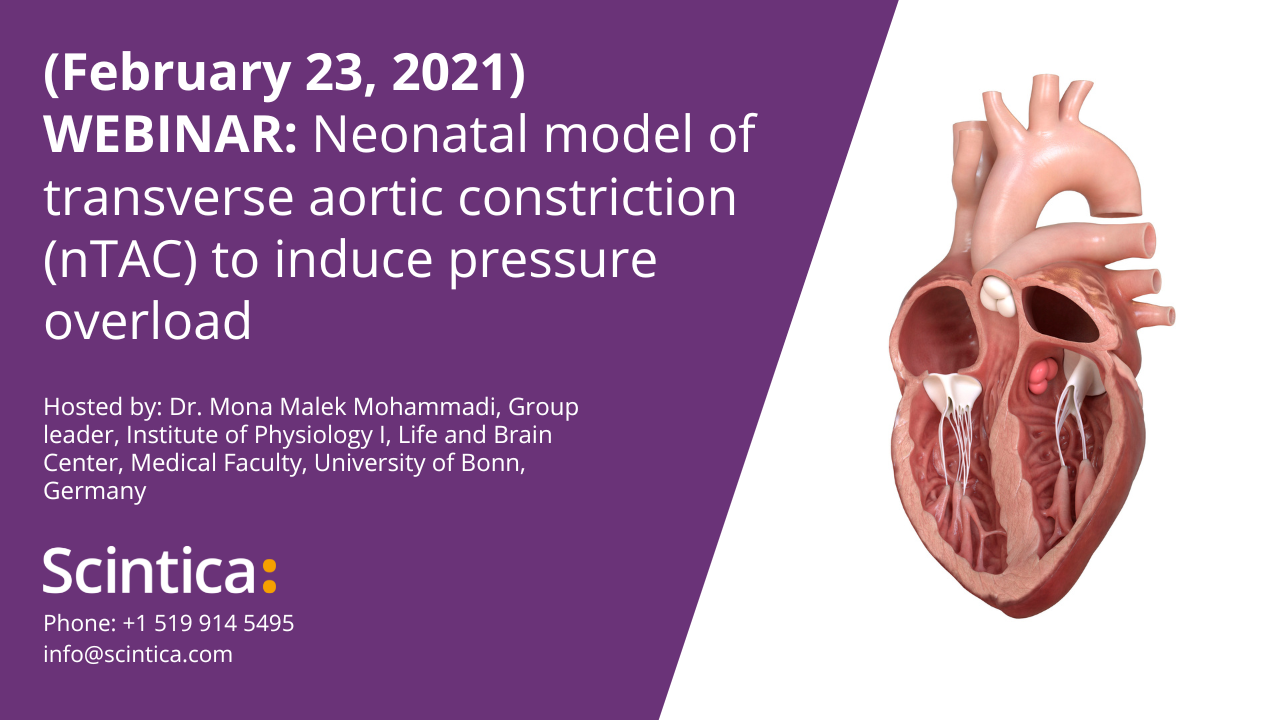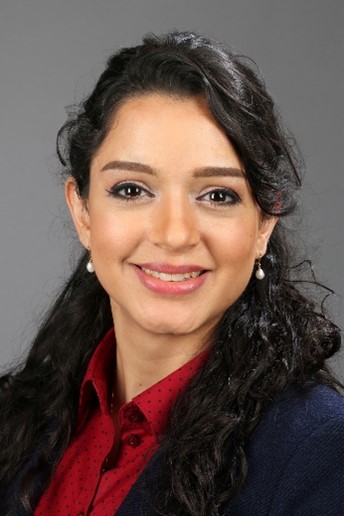(February 23, 2021) WEBINAR: Neonatal model of transverse aortic constriction (nTAC) to induce pressure overload
Overview:
Learning objectives:
- How to perform neonatal model of transverse aortic constriction (nTAC) to induce pressure overload in neonatal mice?
- How to confirm the surgery using Doppler Flow Velocity measurements?
- How to confirm the surgery and assess the outcome using echocardiography?
- What is the outcome of induced pressure overload at P1 vs P7?
- What are the challenges and pitfalls to avoid?
- Troubleshooting
Cardiac disease is the main cause of death worldwide. Insufficient regeneration of the adult mammalian heart owing to the lack of cardiomyocyte proliferation and scarce therapeutic options for patients with advanced cardiac disease are major drivers of cardiac morbidity and mortality. Cardiac regeneration through cardiomyocyte proliferation occurs only in early postnatal mice but is lost shortly after birth when cardiomyocytes withdraw from the cell cycle 1,2.
Dr. Malek Mohammadi has recently established a neonatal model of transverse aortic constriction, to induce pressure overload in neonatal mice in the regenerative phase (postnatal day 1(P1) or in non-regenrative phase (P7). Her lab has demonstrated that neonatal mice at postnatal day 1 (P1) have the ability to adapt to pressure overload, but this ability is lost by P73. This adaptive mechanism in the regeneration phase (P1) is associated with preserved cardiac function, augmented cardiomyocyte proliferation and increased angiogenesis. Only seven days of pressure overload in the non-regenerative phase (P7), however, is associated with fibrosis in the heart and reduced cardiac function3,4. Thus, this fundamentally different response of the postnatal mouse heart to a pathological stimulus provides a model to explore the endogenous mechanism(s) underlying the adaptive and maladaptive response of the mammalian heart.
In this webinar, Dr. Malek Mohammadi provided an overview of the surgical protocol of neonatal model of transverse aortic constriction (nTAC) including postsurgical monitoring and ways to confirm the surgery using Doppler flow velocity measurements and echocardiography.
Furthermore, she discussed troubleshooting of some common problems that you might face during the surgery, and employing flow velocity and echocardiography.
The full protocol including video of the surgery is published at Nature Protocols and is available online: Malek Mohammadi, M., Abouissa, A. & Heineke, J. A surgical mouse model of neonatal pressure overload by transverse aortic constriction. Nat Protoc (2020). https://doi.org/10.1038/s41596-020-00434-9
- Porrello, E. R. et al. Transient regenerative potential of the neonatal mouse heart. Science 331, 1078-1080, doi:10.1126/science.1200708 (2011).
- Malek Mohammadi, M. et al. The transcription factor GATA4 promotes myocardial regeneration in neonatal mice. EMBO Mol Med 9, 265-279, doi:10.15252/emmm.201606602 (2017).
- Malek Mohammadi, M. et al. Induction of cardiomyocyte proliferation and angiogenesis protects neonatal mice from pressure overload-associated maladaptation. JCI Insight 5, doi:10.1172/jci.insight.128336 (2019).
- Malek Mohammadi M., A. A., Heineke J. A Surgical Mouse Model of Neonatal Pressure Overload by Transverse Aortic Constriction. Nature Protocols (2020).
Publication
Malek Mohammadi, M., Abouissa, A. & Heineke, J. A surgical mouse model of neonatal pressure overload by transverse aortic constriction. Nat Protoc (2020).

About the Speaker (s)

Dr. Mona Malek Mohammadi
Group leader, Institute of Physiology I, Life and Brain Center, Medical Faculty, University of Bonn, Germany
Group Leader, Institute of Physiology I, Life and Brain Center, Medical Faculty, University of Bonn, Germany
Dr. Mona Malek Mohammadi obtained a BSc. degree in Biotechnology from Putra University, Malaysia and an MSc in Medical Biotechnology from Tarbiat Modares University, Iran. Subsequently, she moved to Germany to undertake PhD studies, where she was enrolled in Regenerative Biology to Reconstructive Therapy (REBIRTH) PhD program at Hannover Medical School, Germany. During this time, Mona established a neonatal cardiac cryoinjury model which allowed her to study the mechanism, in particular the role of GATA4 in the cardiac regeneration ability of neonatal mice.
Mona was awarded her PhD from Hannover Medical School in 2016, where she remained as a postdoctoral researcher and published her research in EMBO Mol. Med. in 2017. Furthermore, her interest in unraveling the degree of regeneration potential and understating this fascinating ability of the neonatal heart, led her to establish a neonatal model of transverse aortic constriction (nTAC) to induce pressure overload in neonatal mice. Establishing this surgery method allowed her to discover the unique ability of the neonatal mice heart to adapt to pressure overload. She moved to Medical Faculty Mannheim, Heidelberg University in 2017 and continued her work and published her findings in JCI insight in 2019 and also published her established nTAC surgery model in Nature Protocols in 2020.
In 2020, she received a group leader position at the University of Bonn, where she established her own working group to study and understand the mechanism of cardiac regeneration and plasticity of the neonatal heart to discover regenerative therapeutic targets for patients suffering from cardiovascular disease in the future.